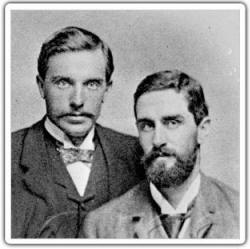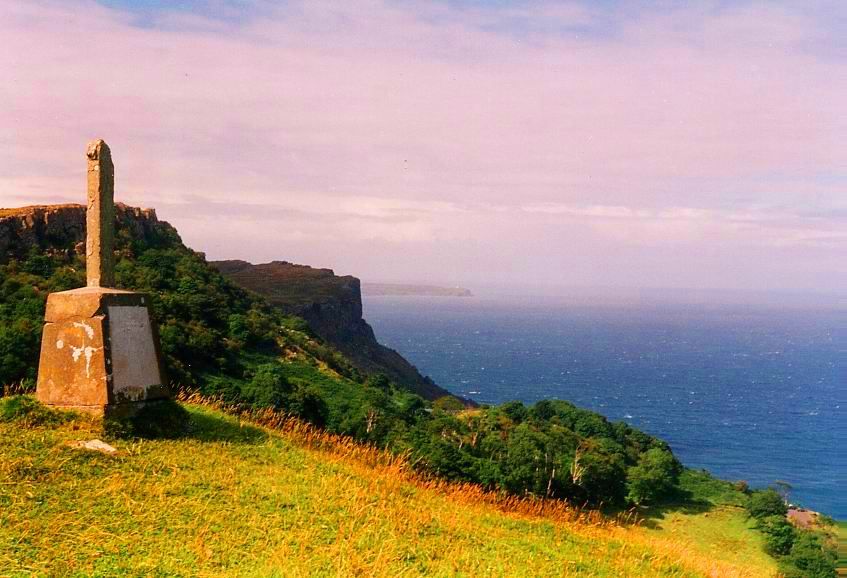Queer Places:
Ballymena Academy, Galgorm Rd, Ballymena BT42 1AJ, Regno Unito
Murlough Bay, Ballycastle BT54 6RG, Regno Unito
 Roger David Casement (1 September 1864 – 3 August 1916), known as Sir Roger
Casement CMG between 1911 and 1916, before his execution for high treason,
when he was stripped of his knighthood and other honours. Casement had
renounced all his titles in a letter to British Foreign Secretary dated 1
February 1915. He was an Irish nationalist who worked for the British Foreign
Office as a diplomat and later became a humanitarian activist, poet and Easter
Rising leader.[1]
Described as the "father of twentieth-century human rights investigations",[2]
he was honoured in 1905 for the Casement Report on the Congo and knighted in
1911 for his important investigations of human rights abuses in Peru. Some of
the iconic gay figures from the two world wars that are well known included
Wilfred Owen,
Lawrence of Arabia,
Roger Casement,
Ivor Novello and
Alan Turing.
Roger David Casement (1 September 1864 – 3 August 1916), known as Sir Roger
Casement CMG between 1911 and 1916, before his execution for high treason,
when he was stripped of his knighthood and other honours. Casement had
renounced all his titles in a letter to British Foreign Secretary dated 1
February 1915. He was an Irish nationalist who worked for the British Foreign
Office as a diplomat and later became a humanitarian activist, poet and Easter
Rising leader.[1]
Described as the "father of twentieth-century human rights investigations",[2]
he was honoured in 1905 for the Casement Report on the Congo and knighted in
1911 for his important investigations of human rights abuses in Peru. Some of
the iconic gay figures from the two world wars that are well known included
Wilfred Owen,
Lawrence of Arabia,
Roger Casement,
Ivor Novello and
Alan Turing.
In Africa as a young man, Casement first worked for commercial interests
before joining the British Colonial Service. In 1891 he was appointed as a
British consul, a profession he followed for more than 20 years. Influenced by
the Boer War and his investigation into colonial atrocities against indigenous
peoples, Casement grew to distrust imperialism. After retiring from consular
service in 1913, he became more involved with Irish republicanism and other
separatist movements. During World War I he made efforts to gain German
military aid for the 1916 Easter Rising that sought to gain Irish
independence.[3]
He was arrested, convicted and executed for high treason. He was stripped
of his knighthood and other honours. Before the trial, the British government
circulated excerpts said to be from his private journals, known as the
Black Diaries, which detailed homosexual activities. Given prevailing
views and existing laws on homosexuality, this material undermined support for
clemency for Casement. Debates have continued about these diaries: a
handwriting comparison study in 2002 concluded Casement had written the
diaries, but this was still contested by some.[4]

Murlogh Bay
Casement's body was buried in quicklime in the prison cemetery at the rear
of Pentonville Prison, where he was hanged. During the decades after his
execution, many formal requests for repatriation of Casement's remains were
refused by British Governments. Finally, in 1965 Casement's remains were
repatriated to the Republic of Ireland. Despite the annulment/withdrawal of
his knighthood in 1916, the 1965 UK Cabinet record of the repatriation
decision refers to him as Sir Roger Casement.[61]
Casement's last wish was to be buried at Murlough Bay on the north coast of
County Antrim. Prime Minister Harold Wilson's government had released the
remains only on condition that they could not be brought into Northern
Ireland, as "the government feared that a reburial there could provoke
Catholic celebrations and Protestant reactions."[14]
Casement's remains lay in state at Arbour Hill in Dublin for five days,
during which time an estimated half a million people filed past his coffin.
After a state funeral, the remains were buried with full military honours in
the Republican plot in Glasnevin Cemetery in Dublin, with other Irish
republicans and nationalists.[62]
The President of Ireland, Éamon de Valera, who in his mid-eighties was the
last surviving leader of the Easter Rising attended the ceremony, along with
an estimated 30,000 others.
My published books:


BACK TO HOME PAGE

- https://en.wikipedia.org/wiki/Roger_Casement
- Bourne, Stephen. Fighting Proud . Bloomsbury Publishing. Edizione del
Kindle.
- Woods, Gregory. Homintern . Yale University Press. Edizione del Kindle.
- Homosexuals in History, A Study of Ambivalence in Society, Literature
and the Arts, by A.L. Rowse, 1977
 Roger David Casement (1 September 1864 – 3 August 1916), known as Sir Roger
Casement CMG between 1911 and 1916, before his execution for high treason,
when he was stripped of his knighthood and other honours. Casement had
renounced all his titles in a letter to British Foreign Secretary dated 1
February 1915. He was an Irish nationalist who worked for the British Foreign
Office as a diplomat and later became a humanitarian activist, poet and Easter
Rising leader.[1]
Described as the "father of twentieth-century human rights investigations",[2]
he was honoured in 1905 for the Casement Report on the Congo and knighted in
1911 for his important investigations of human rights abuses in Peru. Some of
the iconic gay figures from the two world wars that are well known included
Wilfred Owen,
Lawrence of Arabia,
Roger Casement,
Ivor Novello and
Alan Turing.
Roger David Casement (1 September 1864 – 3 August 1916), known as Sir Roger
Casement CMG between 1911 and 1916, before his execution for high treason,
when he was stripped of his knighthood and other honours. Casement had
renounced all his titles in a letter to British Foreign Secretary dated 1
February 1915. He was an Irish nationalist who worked for the British Foreign
Office as a diplomat and later became a humanitarian activist, poet and Easter
Rising leader.[1]
Described as the "father of twentieth-century human rights investigations",[2]
he was honoured in 1905 for the Casement Report on the Congo and knighted in
1911 for his important investigations of human rights abuses in Peru. Some of
the iconic gay figures from the two world wars that are well known included
Wilfred Owen,
Lawrence of Arabia,
Roger Casement,
Ivor Novello and
Alan Turing.

